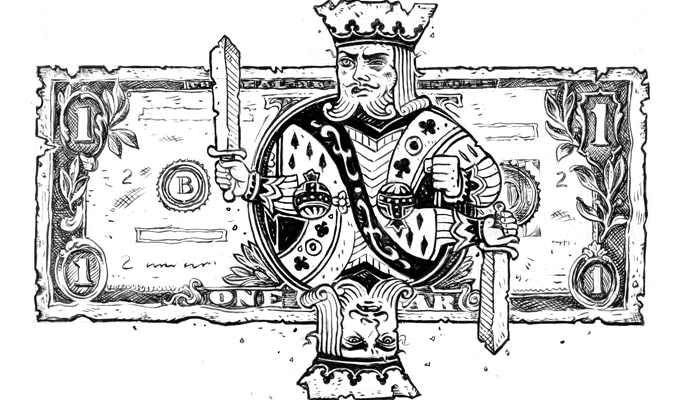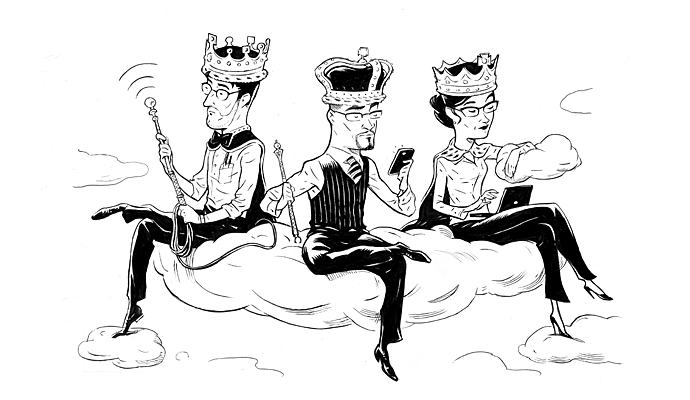The Lesson of J.C. Penney: There Is No King
Fights in the boardroom between shareholders and management highlight one important question—who gets to call the shots?
The saga of J.C. Penney’s transition has apparently reached its end. Former saboteur-CEO Ron Johnson, with his Apple-inspired strategy, has been deposed. Previous CEO Mike Ullworth is back, undoing most of Johnson’s policies. Johnson’s champion, hedge fund investor William Ackman, quit the board abruptly and sold his shares at a US$500 million loss. Several celebrity investors—George Soros, Richard Perry of Barney’s, Larry Robbins of Glenview Capital, and Kyle Bass of the Hayman Capital Fund—have taken visible stakes in the company, with (as Yahoo finance blogger Jeff Macke reported on September 4) the stock price rising accordingly, at least for the moment.
Even as it highlights the uncertainty of Penney’s future—it’s still not clear whether enough shoppers will return to save it or it will be acquired—the episode raises a fascinating debate about corporate governance. In an age of constant disruption, who should hold final decision rights on a company’s direction? Should the management or the shareholders be king?
New Yorker columnist James Surowiecki recently took management’s side. In a blog post on August 15 headlined “When Shareholder Activism Goes Too Far,” he argued that companies should eschew big decisions by “money managers [like Ackman] who fancy themselves corporate visionaries.” In counterpoint, HBR editor Justin Fox, in “Bill Ackman Is Just Doing God’s Work,” pointed out that Ackman’s gambles, even if they failed, represented an improvement over the previous management’s complacent, short-term, profit-driven decision making.
This grand debate goes back at least to 1916, when Henry Ford faced off in court against his major shareholders, John and Horace Dodge. They sued him over his long-term visionary policies, including his famous $5-a-day wage and his decision to lower the price of cars so the middle class could afford them. Instead of those measures, which required reinvesting the company’s profits, the brothers Dodge wanted Ford to pay the shareholders more dividends. The court ruled in the Dodges’ favor, but Ford won in the court of public opinion. In his testimony, he voiced a belief that has been invoked by business visionaries ever since: If you put the quality and value of your work first, he said, “the money will fall into your hands; you can’t get out of it.” In other words, profits follow decisions made on behalf of customer and employees, not decisions made on behalf of shareholders.
Since then, there have been many efforts by shareholders to apply pressure to managers. From about the mid-1960s to the mid-1980s, shareholder suits tended to focus on social responsibility. Saul Alinsky brought the first such action against Kodak in 1967, buying shares so he could take civil rights activists to an annual meeting and press the company to hire black factory workers. Kodak negotiated a settlement and ultimately changed its practices, so the action might be considered a success, but it certainly didn’t help the company navigate the transition to digital photography 40 years later. In the 1970s, Peter Drucker argued that “pension fund socialism”—the influence of labor unions and other pensions over the shares they owned—would be a powerful economic force for social change. But that didn’t happen, in part because the funds ultimately used shareholder activism to pursue short-term profits for themselves.
Since then, shareholder activism has become a perennial facet of corporate life, varying in its effect from company to company: sometimes constructive and sometimes destructive, occasionally (as with the landmark work of Robert Monks, Nell Minow, and their colleagues) leading to better management practices, and even (as with Penney) to high-profile boardroom rumbles.
Justin Fox didn’t mention Amazon founder-CEO Jeff Bezos, but his blog post brought Bezos to mind. Here’s a CEO who deliberately reinvests in his company, even at the (much-noted) expense of his share price. Why do shareholders give Bezos the benefit of the doubt? Because Amazon’s results make sense: They are based on long-term, step-by-step growth in capacity and capabilities, and anyone who looks at the company can see the rationale for each decision, at least after it is made. The same validity was not apparent with Penney. Johnson’s moves—which included abruptly dropping the discounts that Penney’s shoppers were used to, developing a slower-paced business model for the stores, and making a contractually questionable (and seemingly naive) deal with Martha Stewart—might have all been the right moves in the long term. But to a dispassionate onlooker, those moves had a notable shortage of credibility, especially in light of what had been shown to work for Penney in the past. Undoubtedly, this was the issue that led board members to question the judgment of both Johnson and Ackman.
In today’s corporation, the crown is not automatically conferred on anyone. There is no one king. The crown goes, or should go, to whoever has the clearest and most credible explanation of how and why his or her strategy will work.
Complicating the situation, however, is that this criterion—although ideal—is hard to enshrine in a corporate charter. The rules of corporate governance treat all CEOs alike, and give board members power based on their positions, even though the quality of individuals’ judgment may vary enormously.
That may be the real reason that companies are vulnerable: When all is said and done, the rules they follow have little effect on their success. Everything comes back to the judgment of a few people, and that depends—as it did and does at Penney and every other company—on the quality of the people in the leading roles. Lord, help the shareholders. Lord, help us all.





